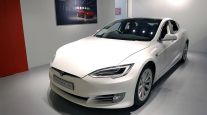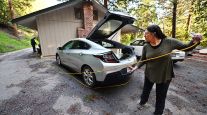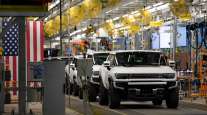Why Ford Chose Tesla for EV Partnership: It’s the Plug
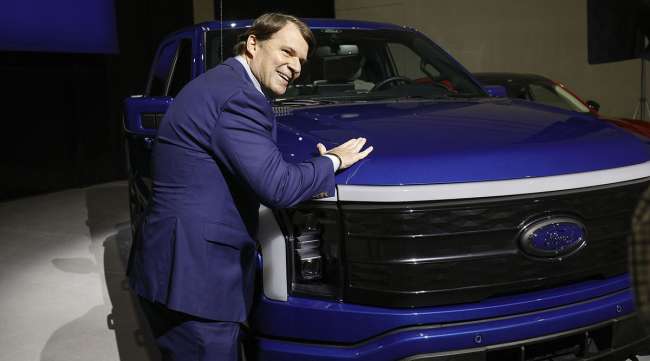
[Stay on top of transportation news: Get TTNews in your inbox.]
Hours before Tesla Inc. and Ford Motor Co. announced their surprise charging partnership, Ford’s chief executive officer offered his take as to why the U.S. has been so slow to adopt electric vehicles.
The problem isn’t the cars, but the plugs that power them, Jim Farley said during a Morgan Stanley summit last week. Survey after survey show that America’s patchwork of often shoddy chargers is the biggest obstacle to consumer acceptance of EVs.
Farley then proceeded to hand a major victory to his counterpart Elon Musk in a broader EV tussle reminiscent of the entertainment business battle between Sony’s Betamax and JVC’s VHS.
Coming soon: More locations to charge your Ford® electric vehicle. Thousands of them. @Tesla https://t.co/FayrARjD3s pic.twitter.com/CtDEcqvdwu — Ford Motor Company (@Ford) May 25, 2023
Starting early next year, Ford owners will get access to more than 12,000 Tesla Superchargers. Ford, in turn, will begin equipping its EVs with built-in ports for connecting to Tesla’s proprietary North American Charging Standard, or NACS, from 2025 onward. This will eliminate the need for adapters that Ford vehicles will have to use to tap Tesla’s chargers initially, since Ford and the rest of the industry have used a different kind of connector called Combined Charging System, or CCS.
Ford’s announcement is a shot across the bow of EVgo Inc. and ChargePoint Holdings Inc., as well as Electrify America, a Volkswagen AG subsidiary set up in the wake of its diesel-emissions scandal. If these companies are unable to step up their game and deliver better charging experiences, there’s a risk Ford’s defection to NACS won’t be the last.
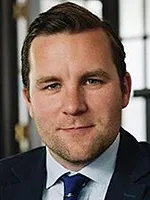
Brennan
“This is at once the most pragmatic and revolutionary step that Ford has made on EVs,” Reilly Brennan, a founding general partner of Trucks Venture Capital, wrote this week in his Future of Transportation newsletter, comparing it to the company’s decision to offer an electric version of its best-selling F-150 pickup. “The other automakers who have been pretending that EVgo, ChargePoint and Electrify America are ‘good enough’ must now finish up their tummy time and arrive at something that is equal to or better than accessing Tesla Superchargers.”
In the 1970s, home entertainment was a growing revenue stream for movie studios, but it wasn’t initially clear which videotape format would prevail. Sony had an edge because it dominated the consumer electronics business, and its Betamax product had better picture quality. But JVC’s VHS tapes won out — they were much cheaper, and unlike Betamax could record a full two-hour movie.
Tesla’s Superchargers have demonstrated similar superiority in reliability and ease of use, ranking No. 1 in a J.D. Power survey of consumers’ experience with EV fast-chargers. In a November blog post announcing that it was opening NACS and inviting charging network operators and carmakers to adopt its connector and port, Tesla boasted that there were 60% more NACS posts in North America than all CCS-equipped networks combined.
Want more news? Listen to today's daily briefing above or go here for more info
Farley experienced the ubiquity of Tesla’s chargers firsthand while driving a Ford Mustang Mach-E electric SUV on vacation with his family from Lake Tahoe to Monterey, Calif., last year.
“My kids kept looking at me and going, ‘Hey dad, there’s another Supercharger, can we stop there?’ ” Farley said during a Twitter Spaces conversation with Musk last week. “I was like, ‘No, we have to go over here behind this other building.’ ”
Tesla has a first-mover advantage with its network of chargers, which generally are in prime locations that are safe and convenient, according to Gary Silberg, global automotive sector leader for consultant KPMG. Tesla’s chargers are simple and elegant to use and “a fantastic secret sauce,” he said.
“GM and others are going to have a big choice to make,” Farley told CNBC last week. “Do they want to have fast charging for customers, or do they want to stick to their standard and have less charging?”
— With assistance from Dana Hull


